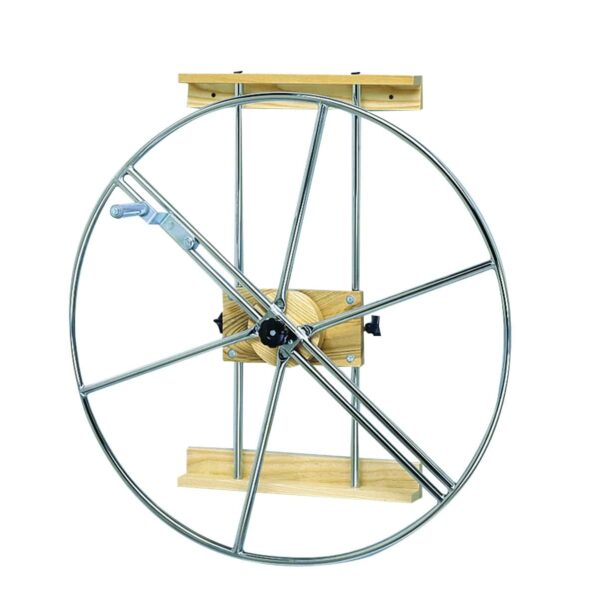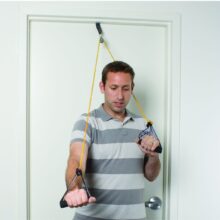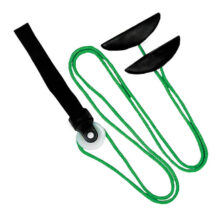Shoulder Wheel
Se connecter pour obtenir les prix des revendeurs
The Shoulder Wheel is a device which allows patients to perform resistance exercises to improve range of motion and relieve pain. The level of resistance can be adjusted by turning the knob on the wheel. Can be used in a standing or seated position.
The CanDo® Shoulder Wheel range-of-motion arc can be varied from 10″ to 39″ by moving handle. The resistance can be varied by turning the resistance knob. The height of the unit is adjustable up to 26″ to accommodate seated and standing therapy.
Shoulder Wheel – Key Applications
A shoulder wheel, also known as a shoulder exerciser, is a piece of rehabilitation equipment commonly used to improve range of motion, strength, and flexibility in the shoulder joint. It typically consists of a wheel or pulley system attached to a wall, door, or overhead fixture, with a rope or cord and handles for grasping. Here are the primary uses of a shoulder wheel:
Range of Motion Exercises
- One of the main uses of a shoulder wheel is to facilitate passive and active range of motion exercises for the shoulder joint.
- Passive range of motion exercises involve using the unaffected arm or an external force, such as the opposite hand or a therapist’s assistance, to move the affected arm through a controlled range of motion.
- Active range of motion exercises involve the patient actively moving the affected arm to the best of their ability, gradually increasing mobility and flexibility in the shoulder joint.
Flexibility Training
- The wheel allows for dynamic stretching of the muscles and soft tissues surrounding the shoulder joint.
- By performing controlled movements with the shoulder wheel, individuals can stretch and lengthen tight or restricted muscles, improving flexibility and reducing stiffness in the shoulder.
Strength Building
- In addition to improving flexibility, the shoulder wheel can also be used for strengthening exercises.
- By adjusting the resistance level or the angle of the wheel, individuals can engage the muscles of the shoulder, including the rotator cuff muscles and deltoids, to build strength and endurance over time.
Rehabilitation Following Injury or Surgery
- These wheels are commonly used in rehabilitation programs for individuals recovering from shoulder injuries, surgeries, or conditions such as rotator cuff tears, shoulder impingement, or frozen shoulder.
- Rehabilitation exercises with the shoulder wheel help restore normal shoulder function, reduce pain and inflammation, and prevent the development of scar tissue or stiffness.
Preventive Maintenance
- Athletes and individuals at risk of shoulder injuries can use the shoulder wheel as part of a preventive maintenance program to maintain optimal shoulder health and function.
- Regular use of the shoulder can help improve shoulder stability, mobility, and strength, reducing the risk of overuse injuries or shoulder instability.
Home Exercise Program
- Shoulder wheels are often prescribed as part of a home exercise program by physical therapists or healthcare providers.
- They provide a convenient and accessible way for individuals to continue their shoulder rehabilitation exercises outside of formal therapy sessions, promoting consistent progress and recovery.
Posture Improvement
- Strengthening and mobilizing the muscles around the shoulder joint with the wheel can contribute to improved posture.
- By correcting muscular imbalances and promoting better shoulder alignment, individuals can reduce the risk of shoulder-related postural issues and associated discomfort.
In summary, the shoulder wheel is a valuable rehabilitation tool that can be used to improve range of motion, flexibility, strength, and shoulder function following injury, surgery, or as part of a preventive maintenance program. Its versatility and accessibility make it an effective option for individuals seeking to optimize shoulder health and performance.






Commentaires
Il n'y a pas encore de commentaires